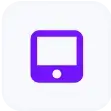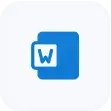Blog

Tips to Successfully Implement Office Management Software
Most office management software offers several tools that can improve the efficiency of running a business. You can boost team output and encourage employee buy-in for collaborative efforts with the correct technology.
Your team’s efficiency is directly related to the design of your office. It is vital that every team member has their own space but that they also have quick access to communal facilities and meeting rooms.
Learning What Your Sector Needs From Top-Rated Software Integration
Using office management software, you can guarantee optimal productivity for your staff. With the correct equipment, your office will be more productive, have happier workers, and do more tasks in less time. These methods and strategies will help you obtain the most out of your software.
Tip #1. Determine what it is you require in particular.
Get started by sketching out your organization’s needs and objectives. Analyze where to improve project management, file sharing, communication, task tracking, or scheduling employees. As a result, you’ll be better able to zero in on the software solution that best fits your specific requirements.
Tip #2. Conduct software comparisons and research the available solutions.
Learn as much as possible about the many options for office management software before making a final decision. Check out ratings, comments, and comparisons other customers make before making a final choice. It meets your learning curve, scalability, personalization, integration, and support needs.
Tip #3. Get input from relevant parties.
Make sure to include significant people, including managers and workers from other departments, when making decisions. Solicit their thoughts and opinions to ensure the program eases any problems and helps them accomplish their daily tasks. Stakeholders are more likely to embrace and use new software if they have a hand in developing it.
Tip #4. Establish a plan and get ready to put it into action.
Create a comprehensive strategy for carrying it out, detailing all relevant steps, deadlines, and who’s responsible for what. A designated project manager should supervise the implementation process. Plan to spread the word to workers about the planned changes, sell them on the program’s value, and answer their questions.
Tip #5. Make available comprehensive training.
Successful adoption and efficient usage of office management software depend on proper training. Provide in-depth training for all staff members, covering every aspect of using the software to its fullest potential. Give them a chance to put what they’re learning into practice and address all their questions and concerns regarding this digitalization in your workplace.
Tip #6. Launch a test run first.
Before introducing the software company-wide, try it in a pilot program. Doing so allows you to isolate and solve potential problems before they spread throughout the company. Collect information from the test group’s users to help you fine-tune the rollout.
Tip #7. Make sure everything works together smoothly with other systems.
Check how well the office management software works with your current setup and how easily it integrates into your workplace. Integration with your company’s existing software and platforms (email, calendars, project management tools, or HR systems) will improve efficiency and effectiveness.
Tip #8. Keep an eye on things, and assess how things are going.
Maintain constant vigilance over the implementation, and solicit user input. It is important to regularly evaluate how the office management software is influencing productivity, efficiency, and morale. Find out what you can do better or where you need more instruction to get the most out of it.
Tip #9. Monitor system and administrative progress.
Using the program, set up a structure to help workers with queries or technical problems. Ensure users get the most out of the office management software by providing ongoing training sessions, tutorials, and documentation.
Tip #10. Change and develop for better system integrations.
It’s not a one-and-done deal to install office management software. Maintain the software and update it often to keep up with your organization’s changing requirements and the technological landscape. Learn how to get the most out of the product by keeping up with the latest features, updates, and enhancements published by the developer.
What is the best office management software?
There are numerous top-notch office management software choices today, each varying in adaptability to your business’s specific requirements. It’s essential to consider your business’s unique needs when choosing software.
DeskFlex, a leading office management solution, streamlines the reservation of conference rooms, desks, and more. Your team can easily view, book, modify, or cancel reservations online, with customization options to enhance their experience. The right software, tailored to your needs, is the key to optimal office management.
How do you schedule a meeting?
Step 1: Choose the Method
- Traditional: Using a logbook, pen, and paper. This is the classic way where you note down the room, time, and date for the meeting.
- Digital: Utilizing platforms like Zoom, Google Meet, etc., which allow you to set up a meeting without being in a physical location.
Step 2: Access the Office Management Software
Before using software like DeskFlex, you need to download its application on your device or access it through a web browser.
Step 3: View Room Availability
DeskFlex offers a 3D floor map that provides a clear view of which rooms are available or occupied at specific times.
Step 4: Schedule the Meeting
- Select the Room: Pick the most suitable room for your meeting based on availability.
- Choose Date & Time: Specify when the meeting will start and when it will end.
Step 5: Finalize the Booking
Confirm the reservation once you’ve selected the room, date, and time. With most software, you might receive a confirmation email or notification.
Step 6: Notify Participants
Whether through the same platform or a separate communication channel, ensure all participants are informed about the meeting details.
Remember, while office management software makes scheduling more straightforward and visual, always cross-check for any clashes or overlaps.
What do you say when scheduling a meeting?
Online meeting schedulers do not require a letter to schedule a meeting. As mentioned earlier, with its 3D Floor map, you can easily navigate which conference rooms are available and in use during a specific time and when they will be available. You can also cancel your booked schedule on the application and re-book whenever you desire as long as that date and time are available.
With office management software, you can avoid double booking since the software will only allow you to click on available conference rooms. Once you have set up your appointment, sharing this with your team is faster since you only need to inform them of your preferred communication channel.
Utilize Office Management Software for Better Office Efficiency
Automating routine chores, facilitating teamwork and communication, and gaining insight into business processes are all possible with the help of office management software. As a result, production rises as administrative costs fall and efficiencies multiply.
#1. Signing In/Out System
For precise monitoring of staff hours, project time tracking, and resource allocation analysis, it is highly recommended to use time tracking software like Toggl, TimeCamp, or Harvest. Using this information, you can better understand where you spend your time in the office and how to eliminate wasteful practices.
#2. Assignment and Project Administration
Project management software like Asana, Trello, and Monday.com can help teams organize their work, communicate effectively, and stay on schedule. Using these resources, teams can better coordinate their efforts, set priorities, and communicate with one another.
#3. Budgeting and Expenditure Control
Expense reporting will go more smoothly using an expenditure management tool like Expensify, Concur, or Zoho Expense. Tools like this help staff save time and eliminate mistakes by automating the approval of expense reports and receipt recording.
#4. Scheduling and Appointment Keeping
Google Calendar, Microsoft Outlook, and Calendly are just a few calendar apps you can use to organize and plan meetings easily. These apps provide streamlined time management and fewer scheduling conflicts by facilitating shared calendars, automated reminders, and app-to-app communication.
#5. Reporting and Analytical Work
Gather information from numerous resources and examine it using business intelligence software like Microsoft Power BI, Tableau, or Google Data Studio. These programs generate charts and reports helpful in analyzing data, finding problem spots, and streamlining administrative tasks.
The Bottom Line
Office management software can help you run a more organized and productive business using the right strategies and methods. Office management software requires constant dedication, assistance, and openness to change. You can get the most out of the program and boost office efficiency if you put in the time and effort required for setup and user adoption.















































 Support
Support  Demo
Demo  Blog
Blog